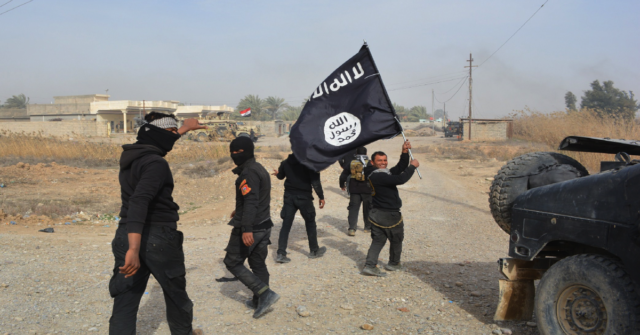
The Islamic State Gains New Operational Foothold in Iraq’s Hamrin Mountains
Publication: Terrorism Monitor Volume: 20 Issue: 1
By:

Diyala is located 60 kilometers northeast of Baghdad, and is considered a “road-knot” between four Iraqi provinces, including Diyala and Sulaymaniyah, Wasit, and Salah al-Din. In addition, roads which pass through Diyala can lead to Anbar province or Mosul. Therefore, any militant group that wants to impose its control over those areas must have a presence in Diyala.
Except for Salah Al-Din, all of these four provinces are adjacent to Iran, and they share with Diyala a similarly rugged geographical terrain. These natural features make Diyala an important place for jihadists to gain a foothold, especially in the Hamrin Mountains. The range extends northwest from Diyala’s border with Iran to the Tigris River, crossing northern Salah al-Din and southern Kirkuk.
Diyala’s inhabitants are Sunni and Shiite Muslims; primarily Arabs and Kurds. As a consequence, the province witnessed sectarian war during conflicts between Shiite militias and al-Qaeda (Sunni) from 2006 to 2008, as well as the birth of the first generation of al-Qaeda in Iraq, whose militants were trained in Diyala’s rugged mountains and valleys. Diyala was also unsurprisingly the last cache for al-Qaeda’s leader in Iraq, Abu Musab al-Zarqawi (aljazeera.net, June 8, 2006). He was killed in an American airstrike in an isolated safe house north of Baghdad in June 2006.
Why Diyala? The Case of Islamic State
The Hamrin Mountains have an estimated height of 500 meters and extend along the Iraq-Iran border. They are also situated between the disputed territories of Baghdad and Erbil. Taken together, this means they play a role in shaping Iraq’s security landscape (kirkuknow.com, November 5). No militant group has taken advantage of this geography more than the Islamic State (IS).
The Hamrin Mountains have also served as a base for IS to launch operations against the Iraqi security forces. This positioning has aided IS in carrying out attacks against the outskirts of Baghdad (al-Hurra, December 9, 2021). In September 2021 alone (al-Madapaper.net, September 8, 2021), IS conducted more than five attacks targeting different villages in Diyala in November. More recently, on December 17, 2021, IS killed three Iraqi soldiers near Diyala’s Hamrin Lake (Shujaatnewsagency.com, December 17, 2021). IS further announced on December 17, 2021 that it killed the director of Adhamiya Passports in Baghdad, Colonel Yasser Ali Al-Jourani, who had been kidnapped four days earlier along with three others near Hamrin Lake (Rudaw, December 13, 2021).
The Iraqi security forces have not been efficient in rooting out IS from the Hamrin Mountains, despite claims by the Iraqi security forces that counter-terrorism operations against IS are ongoing (Iraqi news agency, December 8, 2021). Local villagers in the Hamrin Mountains have reported that the al-Nada village is out of Iraqi government control and still under IS influence. As a result of this influence, women leave the house wearing the burqa, knowing that otherwise they risk retribution from IS, and farmers are forced to pay a monthly tribute to IS of around $50 in order to avoid retaliation. [1]
The attacks carried out by IS and reports of their ongoing influence in the mountains are indicative of weak security coordination between Baghdad and Erbil in these territories. Recognizing this, despite their political rifts, Baghdad and Erbil have renewed dialogue to improve their security coordination (Iraq News Agency, December 4, 2021). Iraqi and Kurdish forces have also begun cooperating to find civilians captured by IS in Diyala (Esta Media Network, December 16, 2021).
Diyala’s Enduring Sectarianism
Part of the problem in Diyala has been that Shiites use pro-Shiite militias to retaliate against Sunni villages after Shiite village are attacked by Islamic State forces. This was clear when the Shiite village, al-Rashad, lost more than 47 of their inhabitants during an IS attack on the village on October 28 (al-Aawsat, October 28, 2021). Reprisals were then carried out by pro-Shiite militias against the villages of Nahr al-Imam and al-Ameriya, which are majority Sunni populations (al-Jazeera.net, October 28, 2021).
Two months later, in December, U.S. Marine Gen. Frank McKenzie indicated that both IS and the Shiite militias were working on imposing their power in Iraq and that U.S. troops would remain in the country (Military Times, December 9, 2021). This further demonstrates the importance of the Diyala border with Iran for the pro-Shiite militias, which are working on a demographic change agenda in the province for their own benefit. IS, however, desires the same, but in favor of the local Sunnis, which ensures the sectarian war will continue in Diyala.
The Iraqi government, therefore, must restore the confidence of Diyala locals by stepping back from their use of pro-Shiite militias, taking control of Diyala, and eliminating IS, while also solving problems with the Kurdistan Region by negotiating territorial disputes with the Kurdish authorities.
Note
[1] Author’s interviews with local villagers, December 2021.



